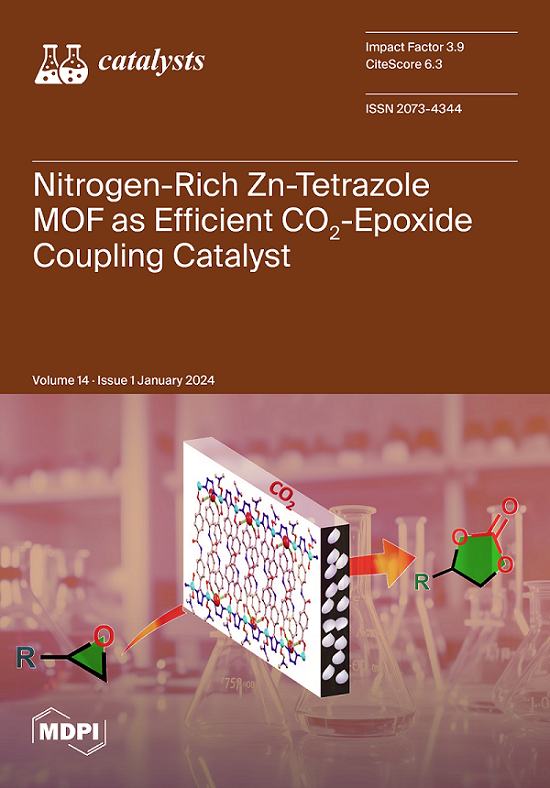Structure Robustness of Highly Dispersed Pt/Al2O3 Catalyst for Propane Dehydrogenation during Oxychlorination Regeneration Process
IF 4
3区 化学
Q2 CHEMISTRY, PHYSICAL
引用次数: 0
Abstract
The structure and performance stability of a Pt-based catalyst for propane dehydrogenation during its reaction–regeneration cycles is one of the key factors for its commercial application. A 0.3% Pt/Al2O3 catalyst with a sub-nanometric particle size was prepared and two different types of regeneration processes, long-term dichloroethane oxychlorination and a reaction–oxidation–oxychlorination cycle, were investigated on this catalyst. The fresh, sintered and regenerated catalyst was characterized by HAADF-STEM, CO-DRIFTS, XPS, CO chemisorption and N2 physisorption, and its catalytic performance for propane dehydrogenation was also tested. The results show that the catalysts tend to have a similar particle size, coordination environment and catalytic performance with the extension of the regeneration time or an increase in the number of cycles in the two regeneration processes, and a common steady state could be achieved on the catalysts. This indicates that structure of the catalyst tends to approach its equilibrium state in the regeneration process, during which the utilization efficiency of Pt is maximized by increasing the dispersion of Pt and its intrinsic activity, and the structural robustness is secured. The performance of the catalyst is comparable to that of a single-atom Pt/Al2O3 catalyst.高分散 Pt/Al2O3 催化剂在氧氯化再生过程中用于丙烷脱氢的结构稳定性
用于丙烷脱氢的铂基催化剂在反应-再生循环过程中的结构和性能稳定性是其商业应用的关键因素之一。研究人员制备了一种粒度为亚纳米级的 0.3% Pt/Al2O3 催化剂,并研究了该催化剂的两种不同类型的再生过程:长期二氯乙烷氧氯化和反应-氧化-氧氯化循环。通过 HAADF-STEM、CO-DRIFTS、XPS、CO 化学吸附和 N2 物理吸附对新鲜、烧结和再生催化剂进行了表征,并测试了其在丙烷脱氢过程中的催化性能。结果表明,随着再生时间的延长或两次再生过程循环次数的增加,催化剂的粒径、配位环境和催化性能趋于相似,催化剂可达到共同的稳定状态。这表明催化剂的结构在再生过程中趋于平衡状态,在此过程中,通过提高铂的分散度和内在活性,最大限度地提高了铂的利用效率,并保证了结构的稳健性。该催化剂的性能与单原子 Pt/Al2O3 催化剂相当。
本文章由计算机程序翻译,如有差异,请以英文原文为准。
求助全文
约1分钟内获得全文
求助全文
来源期刊

Catalysts
CHEMISTRY, PHYSICAL-
CiteScore
6.80
自引率
7.70%
发文量
1330
审稿时长
3 months
期刊介绍:
Catalysts (ISSN 2073-4344) is an international open access journal of catalysts and catalyzed reactions. Catalysts publishes reviews, regular research papers (articles) and short communications. Our aim is to encourage scientists to publish their experimental and theoretical results in as much detail as possible. Therefore, there is no restriction on the length of the papers. The full experimental details must be provided so that the results can be reproduced.
 求助内容:
求助内容: 应助结果提醒方式:
应助结果提醒方式:


